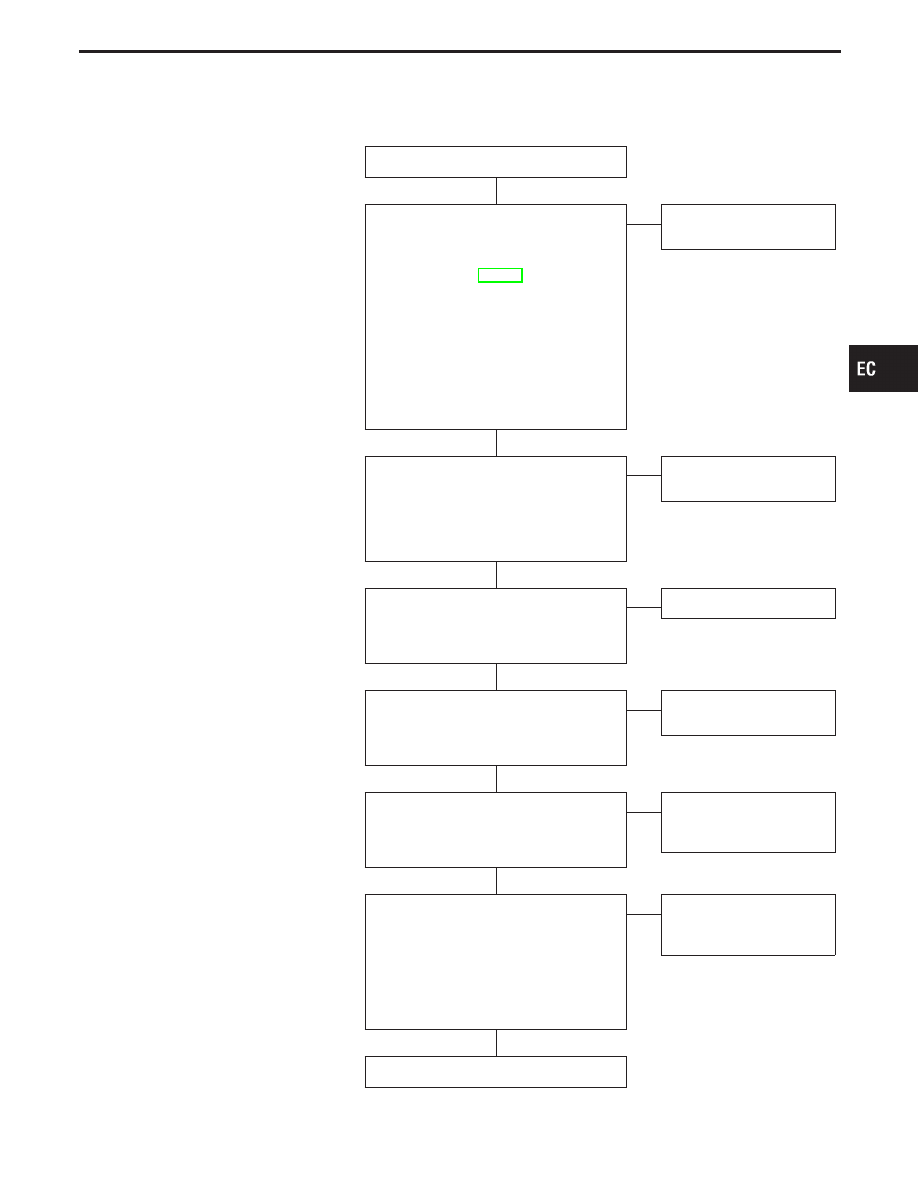Infiniti Q45 (FY33). Manual - part 126

SYMPTOM: Cannot refuel/Fuel odor from the fuel filler open-
ing is strong while refueling.
INSPECTION START
CHECK COMPONENT
(Water separator and EVAP canister).
1. Check water separator for insect nests
or debris. Refer to “COMPONENT
INSPECTION”, EC-441.
2. Weigh the EVAP canister with vent con-
trol valve attached.
If the weight is:
More than 1.8 kg (4.0 lb)
→
NG
Less than 1.8 kg (4.0 lb)
→
OK
If OK, check that water drains from the
canister.
Water should not drain from the
EVAP canister.
OK
E
NG
Replace water separator or
EVAP canister.
CHECK COMPONENT
(Vent hoses and vent tubes).
Check hoses and tubes between EVAP
canister and refueling control valve for
clogging, kink, looseness and improper
connection.
OK
E
NG
Repair or replace hoses
and tubes.
CHECK COMPONENT
(Filler neck tube).
Check signal line and recirculation line for
clogging, dents and cracks.
OK
E
NG
Replace filler neck tube.
CHECK COMPONENT
(Refueling control valve).
Refer to “COMPONENT INSPECTION” on
next page.
OK
E
NG
Replace refueling control
valve with fuel tank.
CHECK COMPONENT
(Refueling EVAP vapor cut valve).
Refer to “COMPONENT INSPECTION” on
next page.
OK
E
NG
Replace fuel tank with
refueling EVAP vapor cut
valve.
CHECK COMPONENT
(Fuel filler tube).
1. Check filler neck tube and hose con-
nected to the fuel tank for clogging,
dents and cracks.
2. Check one-way fuel valve for clogging.
Refer to “COMPONENT INSPECTION”
on next page.
OK
E
NG
Replace fuel filler tube or
replace one-way fuel valve
with fuel tank.
INSPECTION END
GI
MA
EM
LC
FE
AT
PD
FA
RA
BR
ST
RS
BT
HA
EL
IDX
EVAPORATIVE EMISSION SYSTEM
On Board Refueling Vapor Recovery (ORVR)
(Cont’d)
H
H
H
H
H
H
H
EC-33